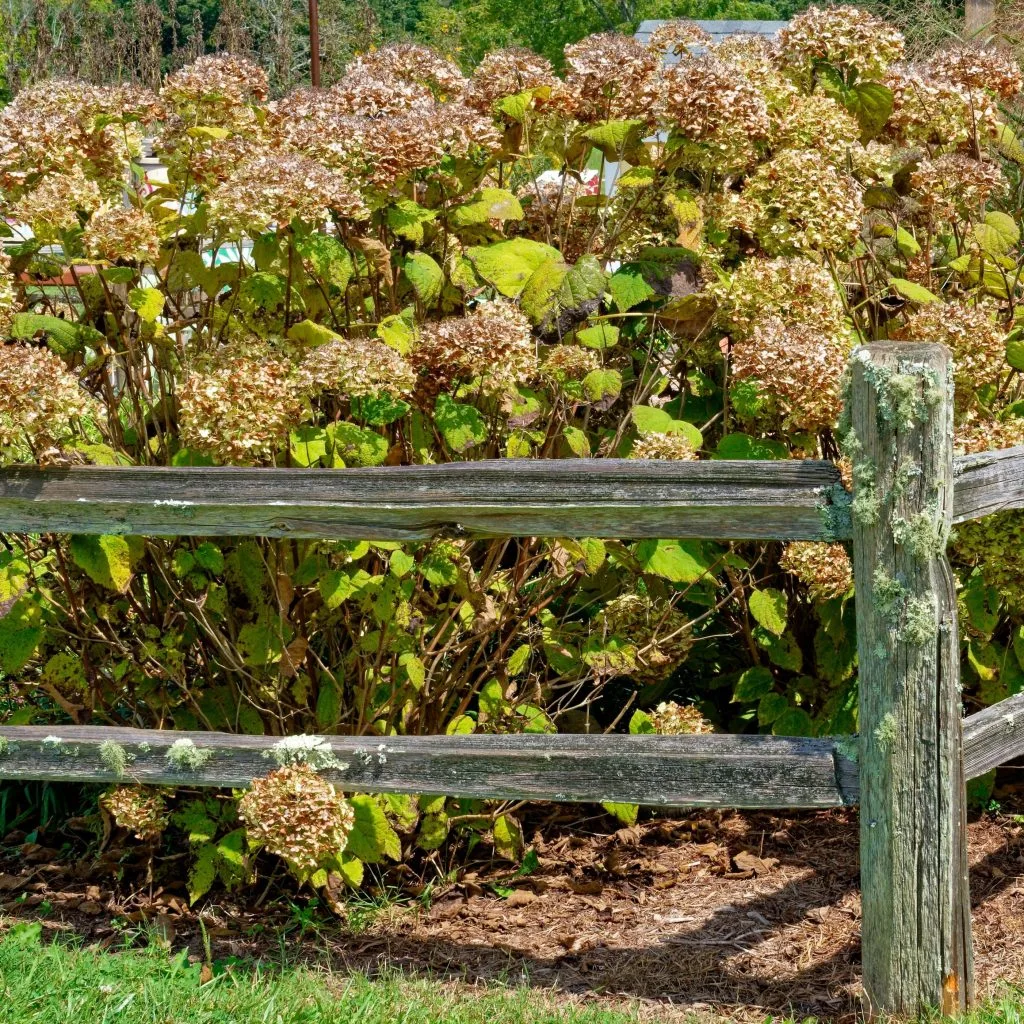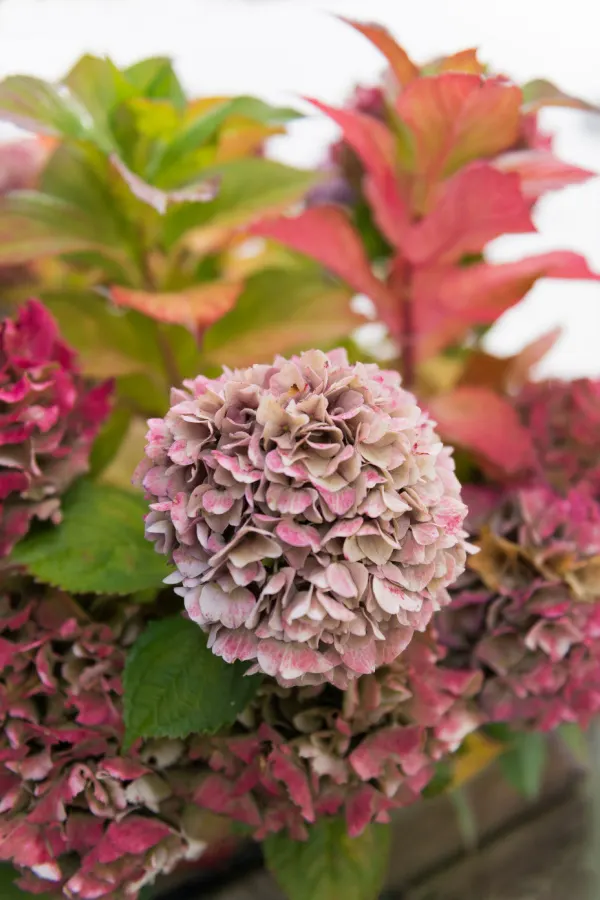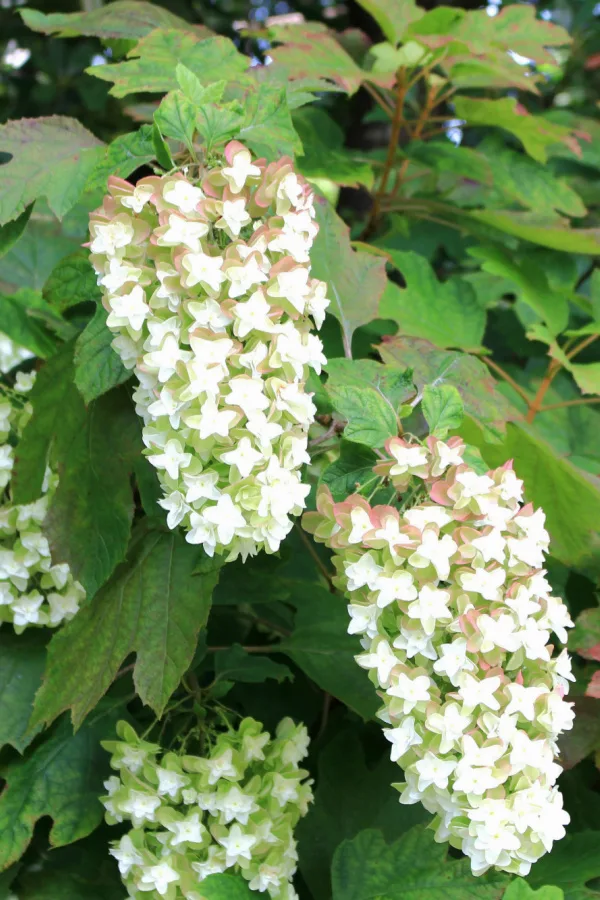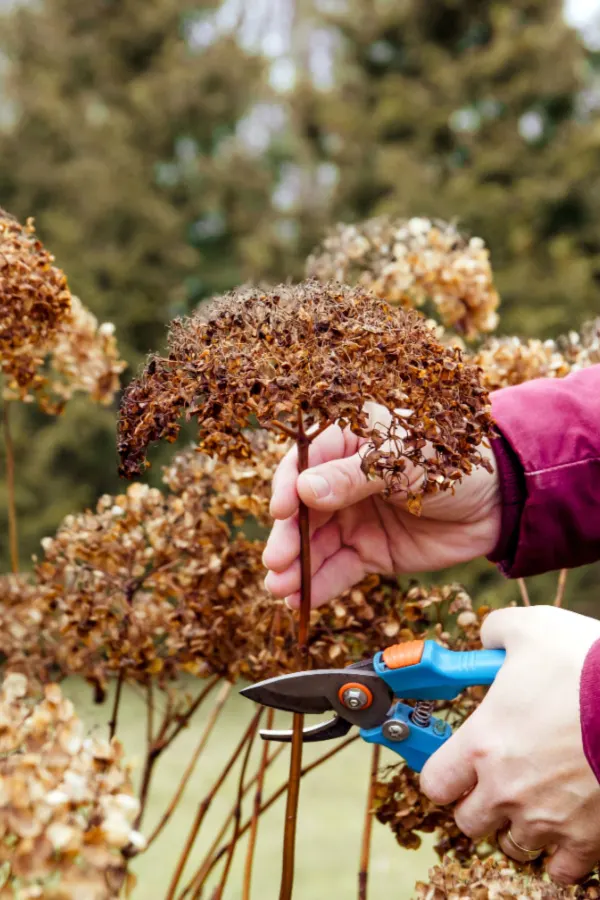Did you know that what you do with your hydrangeas in late summer and early fall can not only have a big impact on their overall health, but also on just how well they perform next year – including whether they bloom or not?
Hydrangeas are one of the most beautiful of all perennial shrubs. But these popular landscape plants are also one of the most often misunderstood when it comes to late summer and early fall care. Especially when dealing with the 3 important tasks of pruning, fertilizing – and what to do with their fading blooms.
Unfortunately, if you prune your hydrangeas at the wrong time, it can all but eliminate next year’s blooms. As can giving them too much fertilizer or powering them at the wrong time. And when it comes to deadheading, as you will see below, removing your hydrangeas old blooms can be a huge factor in next year’s blooming potential as well.

So with keeping your hydrangeas healthy and flowering strong year after year in mind – here is a look at exactly what you should be doing in late summer and early fall to your bushes – and what you shouldn’t!
What To Do With Your Hydrangeas In Late Summer – And What Not To Do!
The Importance Of Deadheading
One of THE most important tasks you can perform at the end of summer or early fall for the health and future blooming potential of your hydrangeas is to deadhead the plant’s spent blooms.
Deadheading is the practice of removing spent blooms. During the blooming season, removing fading blooms can help new blooms to produce a more robust flower set. But as the season draws to an end, it’s actually important to remove all of the blooms to help the bush begin to store energy for winter and next year.
Many gardeners like to leave the last flush of blooms in place on their hydrangea bushes. The blooms really are a sight to see as a dried flower. And that beauty can give a lot of interest through the summer and fall for sure.
It is, however, a good practice before winter settles in to remove the old blooms. And the earlier the better. Not only will it help the plant conserve a bit of energy, it also helps protect it from heavy snow, ice or winter wind. These can all put pressure on the remaining wood, and often can cause snaps or breaks that damage the bush – and next year’s blooms!

Pruning Hydrangeas –What To Do With Your Hydrangeas In Late Summer
One of the biggest mistakes many gardeners make with hydrangeas revolves around pruning. It’s important to know that hydrangeas should not and do not need to be heavily or even moderately pruned each and every single season. In fact, they can produce strong blooms for years without ever cutting them back at all.
Pruning for hydrangeas only needs to occur to keep it well shaped, or after many years of growth in order to keep it manageable. Light pruning for shaping is more than fine to do each season, but mass pruning is simply not necessary on an annual basis.
If you will be pruning, there are a few things to keep in mind before you begin cutting back. First and foremost, you will need to know what variety of hydrangea you are growing. This will determine if your hydrangea needs fall pruning or mid-summer pruning.
There are two separate varieties of hydrangeas. One blooms on old wood growth, while the other blooms on new growth. And knowing which one you are growing is important for knowing when you can cut it back!

When To Prune – What To Do With Your Hydrangeas In Late Summer
Varieties that grow on old wood growth bloom in the summer. Which means that summer blooming hydrangeas flower from blooms that formed on last year’s growth. Pruning for these varieties should take place in the summer, right after they finish blooming.
By pruning right after they bloom in the summer, they can grow new wood and bloom sets for next season. Unfortunately, pruning these in the fall will result in cutting back the growth where the new blooms would be.
On the other hand, fall blooming hydrangeas bloom from same season growth. These hydrangeas can be pruned back in the fall after the blooms die back – or even in very early spring before they begin to grow again. They will then produce the new growth during spring and summer that their fall blooms will appear on.
Oakleaf, Bigleaf, Climbing and Mountain are all summer blooming types of hydrangeas and should be pruned in the summer after blooming. Smooth and Panicle varieties are fall bloomers and pruning should be done in late fall or very early spring.

If you are not sure which variety of hydrangea you are growing, you can simply base your pruning on when your bush blooms. Summer blooms = summer pruning. Fall blooms = late fall / early spring pruning.
Fertilizing – What To Do With Your Hydrangeas In Late Summer
One thing you do not want to do in the fall is apply any additional fertilizers. Applying any more power can actually create late season growth that will be vulnerable to winter damage.
For both hydrangea varieties, fertilizing is best done in the early spring. Use a balanced fertilizer and apply in the early spring just before or as the plant is leafing out.
Preparing Hydrangeas For Winter – What To Do With Your Hydrangeas In Late Summer
Now that we have covered pruning and deadheading, it’s time to cover how to winterize your hydrangeas. And how you winterize will depend on the climate of your specific location.

First, no matter where you live, all hydrangeas can benefit from one thing every fall – an energizing layer of compost! Applying a few inches of compost around the base of your plant not only helps insulate the roots for winter, but slowly adds nutrients that can be used for next year’s growth and blooms – without overpowering it.
No matter if you live in a cold climate or an area with more moderate winters, hydrangeas also benefit from a fresh layer of mulch in the fall. Mulch not only insulates the roots of hydrangeas from sudden thaws and freezing, it also helps to retain moisture.
How Much Mulch Is Enough – How To Care For Hydrangeas In Late Summer & Fall
How much mulch you need to apply will all depend on where you live. The general rule of thumb is the colder the climate, the more mulch you will need. In areas where the temperatures rarely if ever get below freezing, a few inches of mulch on top of the compost is more than enough to help retain moisture.
However, if you live in a cooler climate with winters that have temperatures that drop to zero, a 6″ layer is best. If your climate gets even colder, an 8 to 12″ covering around the main base is ideal for winter protection.
Here is to taking care of your hydrangeas in late summer and early fall – and to big blooms next year! For more on hydrangeas, see our article The Best Way To Fertilize Hydrangeas.
This Is My Garden
Follow Our Facebook Page For Great Gardening Tips And Advice! This Is My Garden Facebook Page
This Is My Garden is a garden website created by gardeners, for gardeners. Jim and Mary Competti have been writing gardening, DIY and recipe articles and books and speaking for over 15 years from their 46 acre Ohio farm. They publish three articles every week, 52 weeks a year. Sign up today to follow via email, or follow along!
